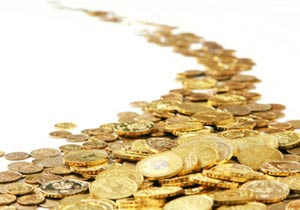Gold lost some shine with investors as global demand slipped by 11% in the last quarter.
Supply was 1,084.6 tonnes – compared with a record 1,223.5 tonnes in the same quarter in 2011, but still above the five year quarterly average of 984.7 tonnes.
In monetary terms, gold was priced 14% down on the same quarter last year at US$57.6 billion – while the price per ounce of $1,652 was down 3% on the year as well.
The figures were released by international trade body the World Gold Council, iExpats reported the same trend back in August 2012
Gold ETFs surge in popularity
Other key findings from the report for the quarter ending September 30, 2012 include:
- Investment in gold through exchange traded funds (ETF) was up 56% on the previous year.
- Investment and jewellery demand was up 9% in India, a key gold market. Investment in imitation coins is increasing in popularity – with demand up 59% – while jewellers are restocking ahead of the wedding season.
Imitation coins in India medallions generally gifted at weddings and festivals, especially Diwali.
Jewellery demand was up 7% and investment increased 12% compared with the same period last year.
Supply increased from 204.8 tonnes 12 months ago to 223 tonnes in Q3 2012 as Indians have ‘acclimatised’ in to buying gold in a rising market, said the report.
- In contrast to India, the world’s other large gold market, China, slipped back , mainly due to a lack of confidence in the slowing economy, said the council.
Demand was down 8% year-on-year, with jewellery down 6% and investment sliding 12%.
The fall in jewellery demand was explained as less stocking of 18 carat pieces by retailers and less stock building as retail expansion cooled.
Golden future
Central banks bought 97.6 tonnes in Q3 – down from an average 100 tonnes in six out of the last seven quarters, although this year, central banks have bought 9% more gold this year than last to date.
Marcus Grubb, managing director, investment at the World Gold Council said: “Gold is reasserting itself as part of the financial system. In the medium term, the quantitative easing and continuing growth in India and China, coupled with the seasonally strong quarter coming up in Asia, are excellent indicators for further growth in the gold market.
“Against a backdrop of continued global economic uncertainty, it is clear from five-year rising demand trends that gold’s fundamental property as a vehicle for capital preservation continues to endure.”
The US (8,133 tonnes) and Germany (3,395) hold the most gold – followed by the International Monetary Fund with around 2,000 tonnes, says the World Gold Council.
